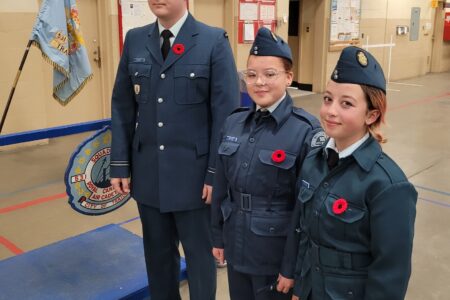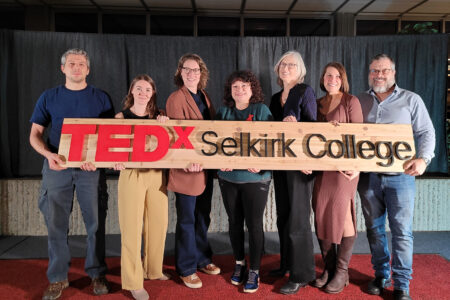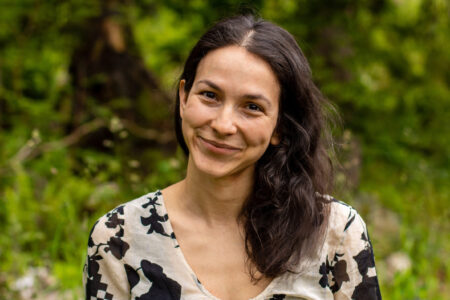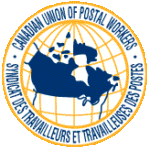Archeological Dig at Slocan Narrows
In the shadow of the towering Valhalla Mountains in the Slocan Valley, post-secondary students and educators are meticulously documenting the human history of our region that stretches back more than 3,000 years.
The Slocan Narrows Archaeological Project is once again bustling with activity along the shores of the Slocan River, just north of Lemon Creek. Funded through Hamilton College in central New York—with support from the Slocan Valley Rail Trail, Columbia Basin Trust, the local Sinixt people and Selkirk College—the six-week archeological field school has nine students, three teaching assistants and two project coordinators carefully digging through an amazing array of pithouses that provide vital links to the past.
“This site is important because the Slocan River is one of the last un-dammed rivers in the Upper Columbia system,” explains Dr. Nathan Goodale, Associate Professor of Anthropology the Hamilton College who is co-directing the project. “The fact that this site exists is significant because it’s probably the last big cluster of pithouses remaining in this area. It’s also significant because of the amount of knowledge that we have gained from it, it has intact deposits and is relatively undisturbed.”
Work on the Slocan Narrows Pithouse Village has been taking place since 2000 when archeologists from the University of Montana and University of Lethbridge began the process of mapping out and exploring the footprints of the past. Almost 40 housepits have been identified and radiocarbon dating has revealed that four different periods of occupation exist stretching from approximately 3,105 years ago to the late 18th Century.
An Important Link to Our Present
Goodale was a graduate student at the University of Montana when he got involved in the project during its first year while he was studying under Dr. Anna Prentiss. That work continued when he was a graduate student at Washington State University where he met Alissa Nauman. The couple moved onto Hamilton College where they have been running the field school since 2009.
Both Goodale and Nauman have made the field school a major part of their academic lives and every year are excited to peel away the layers of the past so they can put together a more accurate picture of what life was like for the people who lived in the village.
“For people who live on this landscape today, it’s important to be able to look at that landscape a little differently and know that people have been here for a very long time,” says Nauman, Instructor of Anthropology at Hamilton College. “That is also important to how it relates to contemporary Aboriginal issues. It’s important to share and make people aware of what has been here.”
This summer, students and teaching assistants are carefully digging into three different pithouses. As with previous field schools, participants are discovering mostly stone tools which were the predominant means by which people made a living in the past. From small stone chips to larger tools used for hunting, scraping and cutting, the human-made objects help provide important insight into the lives of the people who lived along the river.
The people of the Interior Northwest relied heavily on fish, especially anadromous salmon. The Slocan Valley inhabitants were no different and lived during a time when the fish traveled up the Upper Columbia River to the tributaries like the Slocan River. Other evidence uncovered over the years has indicated that the Aboriginal inhabitants of the village also relied on trapping beaver, hunting deer and elk, and subsisted on wild roots like camas.
Selkirk College Provides Connection to Region
Selkirk College students have been involved in two previous field schools in 2011 and 2013. This year Mike Graeme and Allysa Webber are getting their hands dirty with Hamilton College students who hail from many different regions of the United States.
All students live in a camp near the site and spend the entire six weeks immersed in the project. Along with the daily task of excavation and documentation, guest speakers are brought in to provide a deeper understanding of the importance of the work being done.
“The partnership is important because Selkirk College helps bring awareness to the broader region about what we are doing,” says Goodale. “Having local students is really valuable and we are grateful to have these students participating.”
Both Webber and Graeme grew up in the region. Webber recently completed her third year in the Selkirk College School of University Arts & Sciences and Graeme transferred to the University of Victoria this past January after getting his start on a BA in Environmental Studies and Anthropology at the Castlegar Campus.
“One of the important aspects of having our students involved is they become the cultural translator for the area and tell the stories of the area that you wouldn’t be able to get any other way,” says Selkirk College Anthropology Instructor Lori Barkley, who helps facilitate the ongoing partnership with Hamilton College.
Education Goes Beyond the Field School
The public’s fascination with the past is not lost on Goodale and Nauman which is why they have been making a strong effort to bring both young and old to visit. As was the case in 2013, the site has received several visits from school and community groups over the last few weeks. That aspect of the project will climax on July 12 with the Archaeology Open House which invites anybody interested to visit the site.
“The archeology belongs to everyone and we are very excited to be able to come here on a regular basis to learn more,” says Nauman. “An important part of that is sharing with the public what’s going on here. It’s on a public rail trail and provides a great opportunity to share our research results and what was going on here in the distant past.”
The open house will take place between 11 a.m. and 2 p.m. on July 12. The Slocan Narrows Pithouse Village can be found by taking Highway 6 north from Winlaw. Cross Lemon Creek and then look for Lindsay Road where signs will be set up to indicate parking. Wearing comfortable shoes and packing bug spray is recommended.
Find out more about Selkirk College’s School of University Arts & Sciences at selkirk.ca/uas.

























